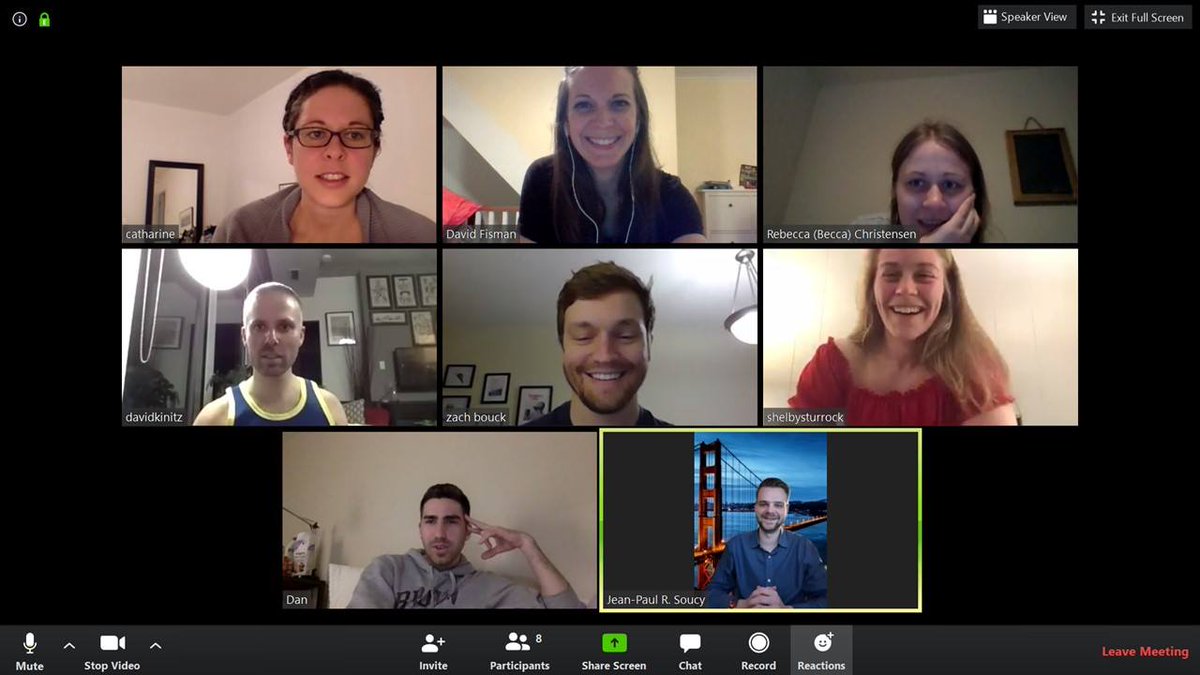My colleague @EpiHarris and I @UofT_dlsph have written a short commentary on #COVID19 looking at why a risk reduction approach to #SocialDistancing (now known as #PhysicalDistancing) won’t work. The full article is available @ConversationCA. 1/8 https://theconversation.com/why-its-not-ok-to-take-small-social-risks-during-the-covid-19-pandemic-135542">https://theconversation.com/why-its-n...
As an #Epidemiologist, I often hear questions like: Can I visit with friends if I’m symptom-free? Or see my grandmother if I’ve been isolating for 14-days? Short answer: NO. 2/8
1. Person-to-person transmission. Every close contact with someone, even if they don’t show symptoms yet, risks transmitting #SARSCoV2. 4/8
2. Population vs. individual risk. In the overall population, it’s mostly older adults and those with underlying health problems getting sick. But at an individual level, everyone is vulnerable to #COVID19. 5/8
3. Community-wide spread. As we get more cases in the community, our #publichealth strategy must transition to broad population-wide measures like #SocialDistancing to #FlattenTheCurve. 6/8
4. Burden of disease. There is a high probability that LOTS OF PEOPLE will get very sick or die from this infection without specific treatments and with an IFR of about 1-2%. 7/8
#SocialDistancing is not about having less frequent or “less risky” social encounters with friends and family, but rather redefining what those social interactions look like for #COVID19. 8/8
In fact, this @ConversationCA article is a great example of #Collaboration that can come out of virtual meetups over wine!  https://abs.twimg.com/emoji/v2/... draggable="false" alt="🍷" title="Wine glass" aria-label="Emoji: Wine glass"> 9/8
https://abs.twimg.com/emoji/v2/... draggable="false" alt="🍷" title="Wine glass" aria-label="Emoji: Wine glass"> 9/8

 Read on Twitter
Read on Twitter 9/8" title="In fact, this @ConversationCA article is a great example of #Collaboration that can come out of virtual meetups over wine! https://abs.twimg.com/emoji/v2/... draggable="false" alt="🍷" title="Wine glass" aria-label="Emoji: Wine glass"> 9/8" class="img-responsive" style="max-width:100%;"/>
9/8" title="In fact, this @ConversationCA article is a great example of #Collaboration that can come out of virtual meetups over wine! https://abs.twimg.com/emoji/v2/... draggable="false" alt="🍷" title="Wine glass" aria-label="Emoji: Wine glass"> 9/8" class="img-responsive" style="max-width:100%;"/>


